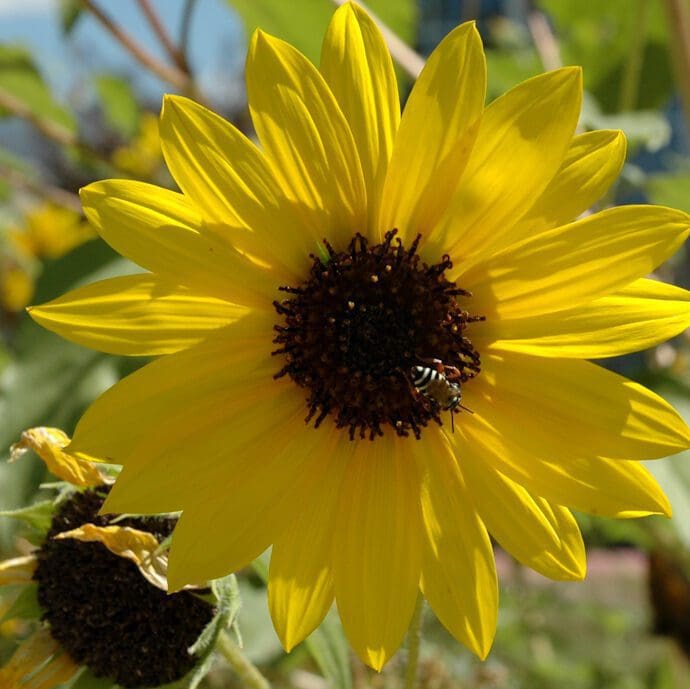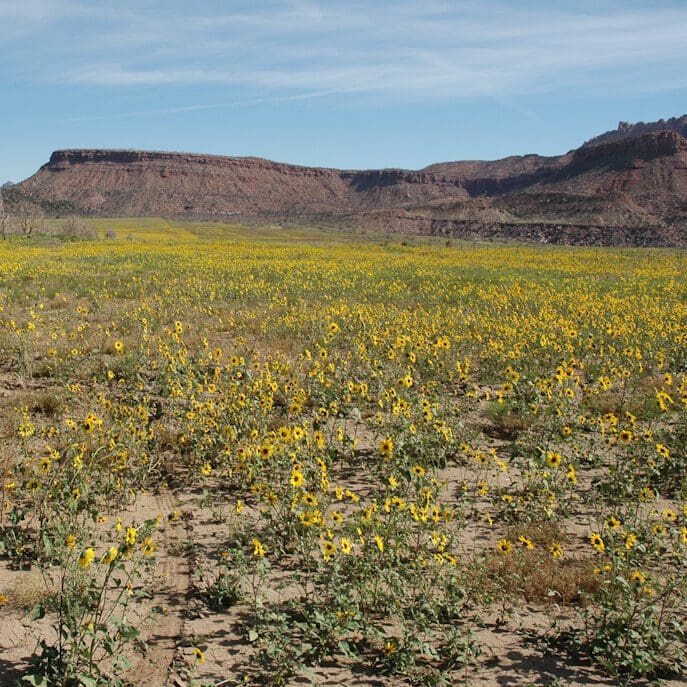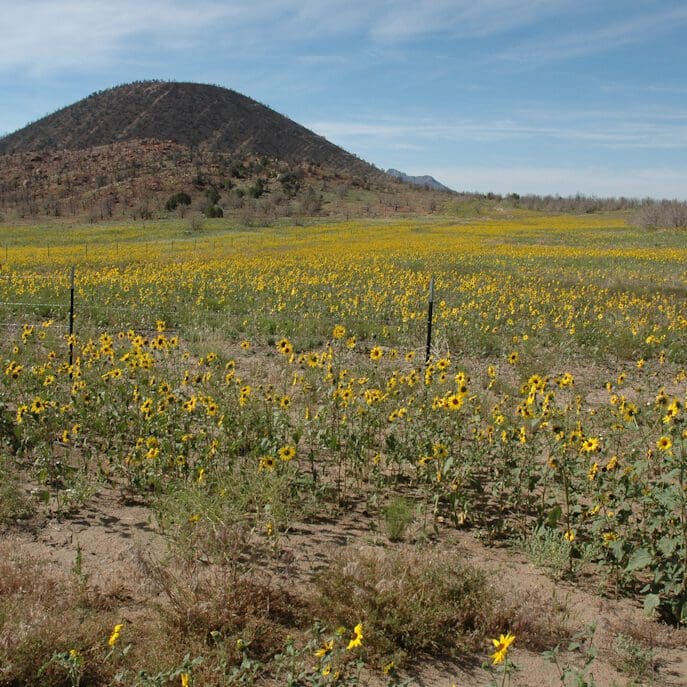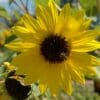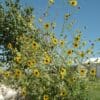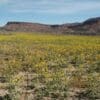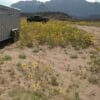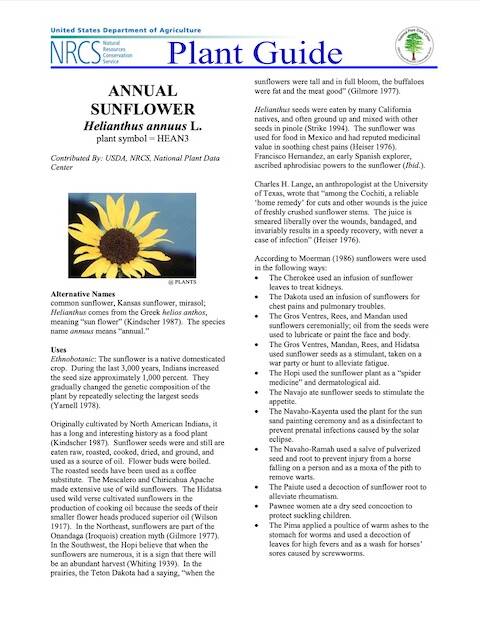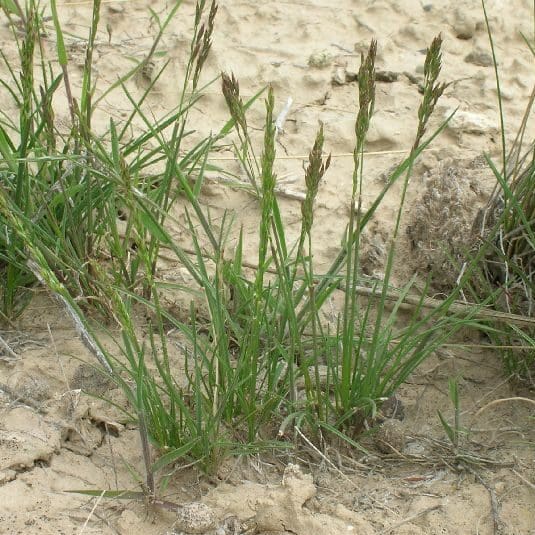Annual Sunflower
- Scientific name: Helianthus annuus
- Native, annual sunflower
- Widespread throughout western states
- Commonly occurs in open fields, roadsides
- Requires full sun
- Not to be confused with large, cultivated, edible varieties
161 in stock
Annual Sunflower (Helianthus annuus) is common and widespread. It is a native sunflower and, in the case of many varieties, a domesticated crop. In some areas, it is so prolific it is considered a roadside weed. Despite its “weedy” reputation to some, annual sunflower is a valuable and often used species for reclamation, wildlife habitat improvement and pollinators.
Annual sunflower is common in open sites in many different habitats throughout North America, southern Canada, and Mexico. Annual sunflower should not be confused with the large, cultivated, edible varieties. It is considered an open land species, generally on moist soils, but it can survive high heat and periods of drought. It is a species of prairies and other grasslands, old fields, roadsides, railroad rights-of-way, savannas, and forest edges. This native sunflower is widely used for reclamation and wildlife habitat improvement.
Sunflowers need full sun. They are especially prominent along roadsides and disturbed areas, making them a good ingredient for reclamation and stabilization mixes. Sunflowers are an important species for wildlife habitat improvement, especially for birds. Annual Sunflower is a common component in pollinator mixes.
Sunflower stalks have been used as fuel, fodder for livestock, food for poultry, and ensilage. In the Soviet Union, after the dried flower stalks have been used for fuel, the ashes are returned to the soil. The seed hulls could be used for “litter” for poultry or returned to the soil or composted. A few years ago, it was found that the hulls could be used in fuels. Today the hulls are used in the Soviet Union in manufacturing ethyl alcohol and furfural, in lining plywood, and in growing yeast. The stems have been used as a source of commercial fiber. The Chinese have used this fiber for the manufacturing of fabrics. Other countries are experimenting with the use of fiber in paper.
The name “Helianthus” comes from the Greek helios anthos, meaning “sun flower”, the species name annuus means “annual.” Originally cultivated by North American Indians, it has a long and interesting history as a food plant. Sunflower seeds were and still are eaten raw, roasted, cooked, dried, and ground, and used as a source of oil. The roasted seeds have been used as a coffee substitute. Numerous tribes from Canada to Mexico have used them for food, as a die and for medicine. They are often cited in folklore and storytelling. In the Southwest, the Hopi believe that when the sunflowers are numerous, it is a sign that there will be an abundant harvest. In the prairies, the Teton Dakota had a saying, “when the sunflowers were tall and in full bloom, the buffaloes were fat and the meat good”
***Click the “Quick Plant Facts” tab above for more information.
Native Sunflower
Annual Sunflower NRCS Plant Guide
Annual Sunflower NRCS Plant Guide
PDF Version of NRCS Plants Guide
Prepared By: Michelle Stevens formerly USDA, NRCS, National Plant Data Center
Species Coordinator: M. Kat Anderson USDA, NRCS, National Plant Data Center c/o Environmental Horticulture Department, University of California, Davis, California
Quick Plant Facts
| Common Name: | Common Sunflower, Wild Annual Sunflower |
|---|---|
| Scientific Name: | |
| Origin: | |
| Lifespan: | |
| Plant Type: | |
| Seed Count | 58,000 seeds/lb. |
| Zone Map | comingsoon.gif |
| Growth Height: | |
| Min. Precipitation: | |
| Planting Rate: | |
| Best Time to Sow: | |
| Max Sowing Depth: | |
| Root Form: | |
| Growth Season: | |
| Sun & Shade Tolerance: | Full Sun, Shade Intolerant |
| pH Tolerance: | |
| Hardiness Zones: |
